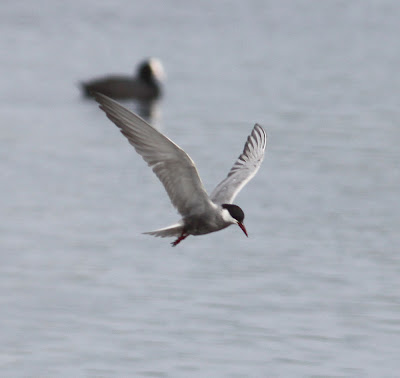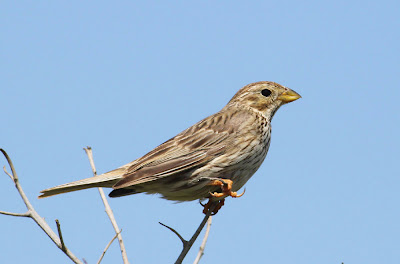There’s no birding today, it's grandad duties looking after Isabella. So for blog regulars and “Menorca” Internet searchers here are some photographs from our recent holiday to that beautiful island.
Sue and I go to Menorca because we adore the island scenery, admire the style, grace and friendly nature of the islanders, love exploring the countryside and the quiet little inland towns or perhaps visiting the historic cities of Mahon and Ciutadella. Two weeks of almost guaranteed sunshine plays a part too.
As ever, click on the pictures for a colourful slide show.
As ever, click on the pictures for a colourful slide show.
Ciutadella
Mahon harbour
Es Mercadal
A bistro, Es Mercadal
While birding there takes second place to the actual holiday, any bird watching we do is a part of the relaxing time we have and the seeing afresh of common Mediterranean birds. Some years we pick up new species for our island ”list” - this year Corncrake, Spoonbill and Glossy Ibis.
But bird watching is never easy in Menorca. Many of the regular species like Cetti’s Warbler, Nightingale, Firecrest, Purple Heron, Squacco Heron, Golden Oriole and Quail hide themselves away or stay distant whereby actually setting eyes upon any one of them becomes something of an occasion. Even the legendary and sought after Hoopoe is actually very shy in Menorca, more often heard as a distant 'oop-oop-oop' rather than seen well. Luckily I know of a regular breeding spot where both birds accept the busied click of the shutter button just once a year.
Fornells bay
Fornells
Bee Eater
Purple Heron
The Hoopoes weren't as far on as last year. This time I saw only the male as every fiftenn minutes or so he brought in food for the female's inspection, she sitting tight on the nest as he passed the food over without entering the concrete cavity.
Hoopoe
Hoopoe
Hoopoe
In ten visits to the island I have yet to meet a Menorcan birder and whilst there may be a small number, I imagine they could be counted on the digits of both hands and more probably one. Bird watching seems not to figure in the Menorcan culture. There are hardly any visiting birders either, the more substantial list and reputation of nearby Majorca ensuring that most foreign birders head there instead of its smaller neighbour. There is no bird news service on Menorca, word of mouth being the only means of relating news between the transient population of mainly European bird watchers who spend a week or fourteen days there before returning to the colder north.
Screen Hide at Es Grau
View - Es Grau, Menorca
Little Egret
Little Grebe
Whiskered Tern
Ses Salines - Menorca
Black-winged Stilt
In other words, and for those who appreciate such things, bird watching Menorca Style is rather old-fashioned by allowing discovery of birds alone, unencumbered by the annoying bleeps of pagers and mobile phones or car loads of hyped-up folk dashing between one bird-hit and the next. OK, at the end of a week the list in your notebook won’t be long but there will be a wonderful selection of Mediterranean species, a number of common birds and a few “goodies” thrown in, all of them with no pressure involved to the bird or the birder.
Turtle Dove
Bee Eater
Stonechat
Cattle Egret
Cattle Egrets
Kestrel
It wasn't just birds. We saw good numbers of European Swallowtail Butterfly on a couple of days - flying too fast and frequently to get pictures. We also came acrosss a few large grasshoppers - up to 3 inches long - the migratory Egyptian Grasshoper I think. Insect experts help required please.
And at the end of another stress free day there’s always a quiet bar to while away the time, watch the sunset and spend quality time, planning another day of discovery and hoping that tomorrow’s Roller may be a lot closer. If not, there's always next year and an excuse for a return visit.
Egyptian Grasshopper?
And at the end of another stress free day there’s always a quiet bar to while away the time, watch the sunset and spend quality time, planning another day of discovery and hoping that tomorrow’s Roller may be a lot closer. If not, there's always next year and an excuse for a return visit.
Bar at Es Grau
European Roller
Menorca Sunset
Please log in soon to Another Bird Blog for more news and views. I'm linking this post to Stewart's Gallery - World Bird Wednesday in Australia- take a look for more bird pictures.



















































































